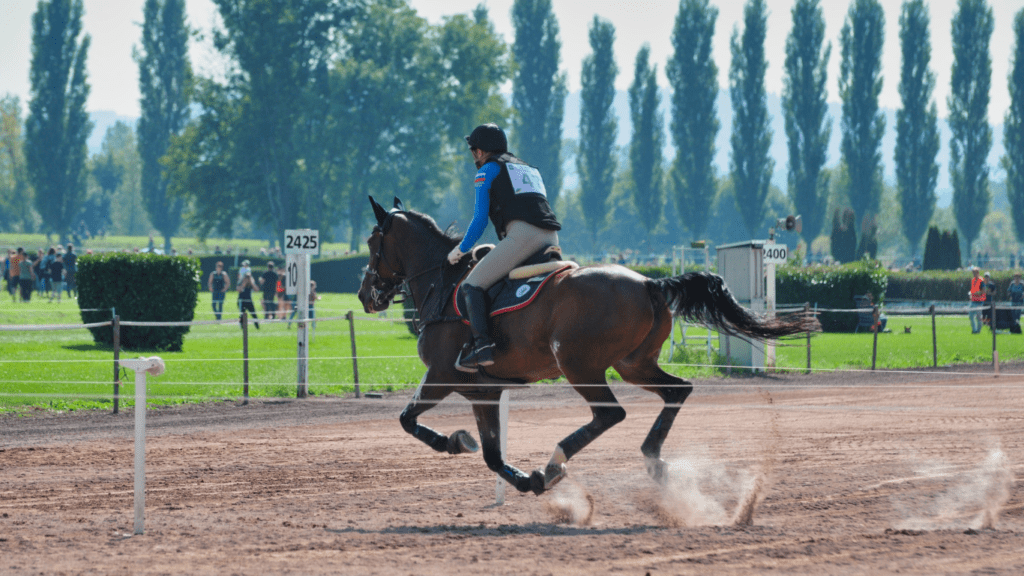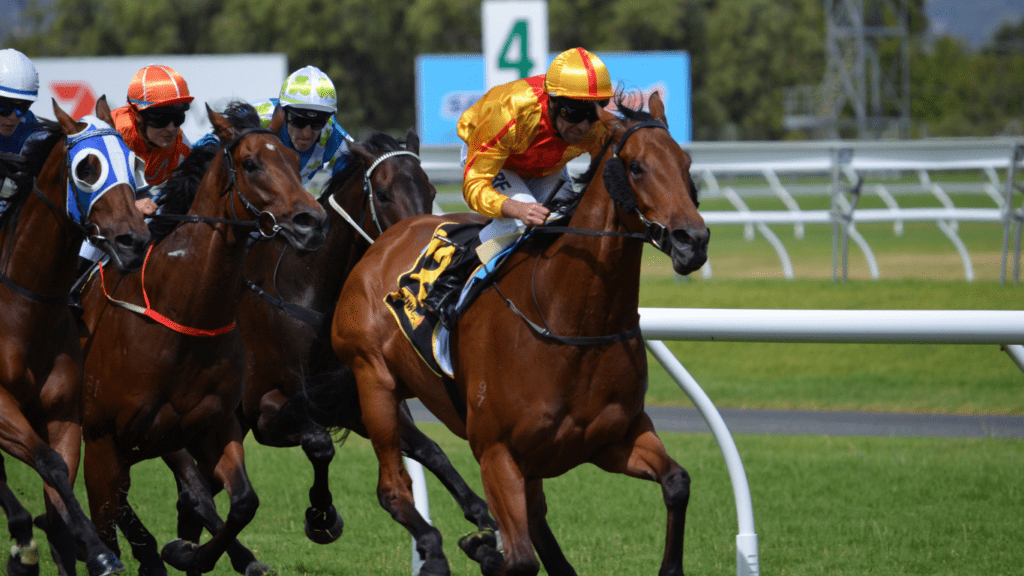Understanding Horse Racing Betting
Horse racing betting offers a fascinating blend of skill and chance. Gaining a solid grasp of the basics enhances the experience for new bettors.
Basics of Horse Racing
In horse racing, understanding event structures strengthens betting strategies. Races are typically classified by the:
- horse’s age
- class
- distance
Younger horses compete in maiden races before advancing to more competitive levels. Class levels, such as claiming or stakes races, indicate the quality and competition level. Familiarity with race types aids in assessing the likelihood of various outcomes.
Common Betting Terms
Knowing the terminology is essential to navigate betting options. Wager types include win, place, and show bets. A win bet pays when a horse finishes first; a place bet pays if the horse finishes first or second; and a show bet pays if it finishes in the top three. Exotic bets, like exacta or trifecta, require predicting the order of multiple horses. Understanding these terms empowers bettors to make informed decisions.
Mistakes Related to Betting Strategies
In horse racing betting, strategic errors can impact outcomes significantly. Avoiding these mistakes aids in developing a more effective betting strategy.
Ignoring Research and Statistics
Relying solely on intuition in horse racing betting leads to uninformed decisions. Examining detailed past performances, track conditions, and jockey statistics provides insights that gut feelings might miss.
For instance, understanding a horse’s recent form and how well it performs on different surfaces can indicate potential success. Accumulating knowledge about trainers’ past performances in similar races also enriches betting strategies. Invest time in studying reputable sources and statistical data to enhance winning chances.
Overcommitting Financially

Staking more money than a budget allows can lead to critical financial consequences. Allocating a specific portion of disposable income for betting ensures that losses remain manageable.
Establishing limits helps in maintaining discipline and avoiding impulsive betting decisions rooted in the excitement of potential wins.
It’s crucial to avoid chasing losses by wagering larger amounts, as this can quickly spiral into unsustainable financial practices. By adhering to pre-set betting limits, it’s easier to enjoy the sport without undue stress.
Misunderstanding the Odds
Understanding odds in horse racing betting can prevent costly mistakes. New bettors often misinterpret odds formats or neglect to compare odds from different sources.
Misinterpreting Different Odds Formats
- Odds represent the probability of a horse winning and the potential return.
- Three main odds formats exist: fractional, decimal, and moneyline.
- I often see newcomers confused by fractional odds like 5/1, which indicate a $5 profit for every $1 wagered.
- Decimal odds, popular in Europe, show total returns, including the original stake, simplifying calculations (e.g., 6.0 equals $5 profit on a $1 bet).
- My experience suggests that many struggle with moneyline odds, usually seen in the US, where positive numbers show profit on a $100 stake, and negative numbers indicate the amount needed to bet to win $100.
- Recognizing these formats enhances betting precision and reduces errors.
Failing to Compare Odds
Odds vary between bookmakers, impacting potential returns. To maximize earnings, I compare odds before placing a bet. For instance, if one bookmaker offers 4/1 and another 5/1 on the same horse, the latter provides a higher payout.
Over time, these differences can significantly affect overall profit. Comparing odds requires minimal effort but dramatically increases the chances of better returns. Many bettors miss this step, unknowingly limiting their winnings. By regularly comparing odds, I optimize my betting strategy and improve my success rate.
Lack of Discipline
Discipline in horse racing betting sets apart successful bettors from those who struggle. Newcomers, often driven by emotions and desire to recoup losses, face significant challenges.
Chasing Losses
Chasing losses in horse racing betting leads to larger setbacks. After a series of unsuccessful bets, the urge to recover quickly intensifies; however, this impulse often results in poor decision-making and larger financial woes. Personally, establishing a clear and strict budget for my bankroll helps in resisting this temptation. By sticking rigidly to predetermined betting limits, I ensure staying within safe parameters and avoid spiraling losses.
Betting Emotionally
Betting with emotions, rather than informed strategies, clouds judgment in gambling scenarios. I’ve noticed that following gut reactions instead of analyzing hard data leads to impulsive and often regrettable bets. Recognizing this tendency is crucial for new bettors. By focusing on analytics—like past performances and current conditions—rather than personal biases, informed bets can be placed, reducing emotional influence on my wagers.
Overlooking Bankroll Management
Bankroll management stands as a cornerstone in horse racing betting, crucial for sustaining long-term betting activities. Missteps in this area can lead to rapid financial decline.
Setting Unrealistic Goals
Unrealistic goals in betting often stem from expectations of quick wealth. New bettors might anticipate significant profits without understanding the odds and intricacies involved. Breaking down desired outcomes into achievable steps fosters a realistic approach. Seek to enhance understanding by analyzing past betting sessions and adjusting expectations based on real data.
Ignoring Staking Plans
Ignoring staking plans leads to erratic betting and financial instability. A staking plan determines how much to bet on each race relative to one’s bankroll, reducing the risk of overexposure. Progression strategies like flat betting or percentage betting help maintain consistency. Implementing a structured staking plan maximizes potential returns while safeguarding against uncontrollable losses.



